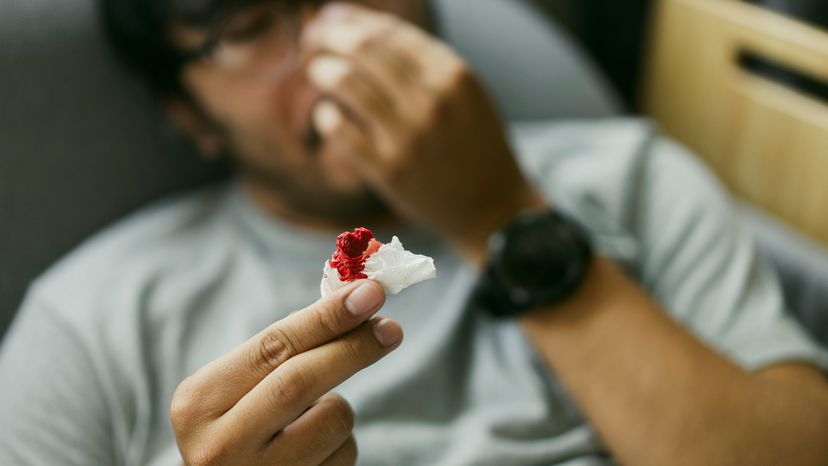
Altitude sickness is caused by low atmospheric pressure. At high elevations, there's less oxygen in the air for you to breathe in. When you travel from a low elevation to a high one, your body needs time to adjust to the lower levels of oxygen reaching your bloodstream. Eventually, your respiration and heart activity increase and you produce more red blood cells to transport the oxygen to where it needs to go. Then you feel back to normal.
The faster you ascend and the higher the height, the more likely you'll suffer from what's called acute mountain sickness. Generally, people start feeling the symptoms of acute mountain sickness when they travel to around 8,000 feet above sea level (2,400 meters) in a single day. Symptoms of acute mountain sickness include headaches, fatigue, dizziness, nausea, light-headedness, loss of appetite and difficulty sleeping. Some people get a bloody nose at high altitudes, but it's not necessarily a symptom of altitude sickness. Generally, such high-altitude nosebleeds are caused by the combination of the elevation, cold weather and low humidity. The lack of moisture causes the membranes in your nose to dry out, crack and bleed.
Advertisement
If you do get a nosebleed because of high altitudes, the treatment is the same as for any other nosebleed. You should sit up straight with your head bent slightly forward. Tilting your head back isn't a good idea, since it can cause the blood to run down your throat and into your stomach. Blow your nose to get out any clots that may be in there, even though it might make you bleed more. Then pinch the lower, softer part of your nose shut and hold it that way for at least 10 minutes. Once the bleeding stops, you can put antiseptic cream or moisturizing ointment on the inside of your nose to help it heal. Then leave your nose alone for at least 12 hours.